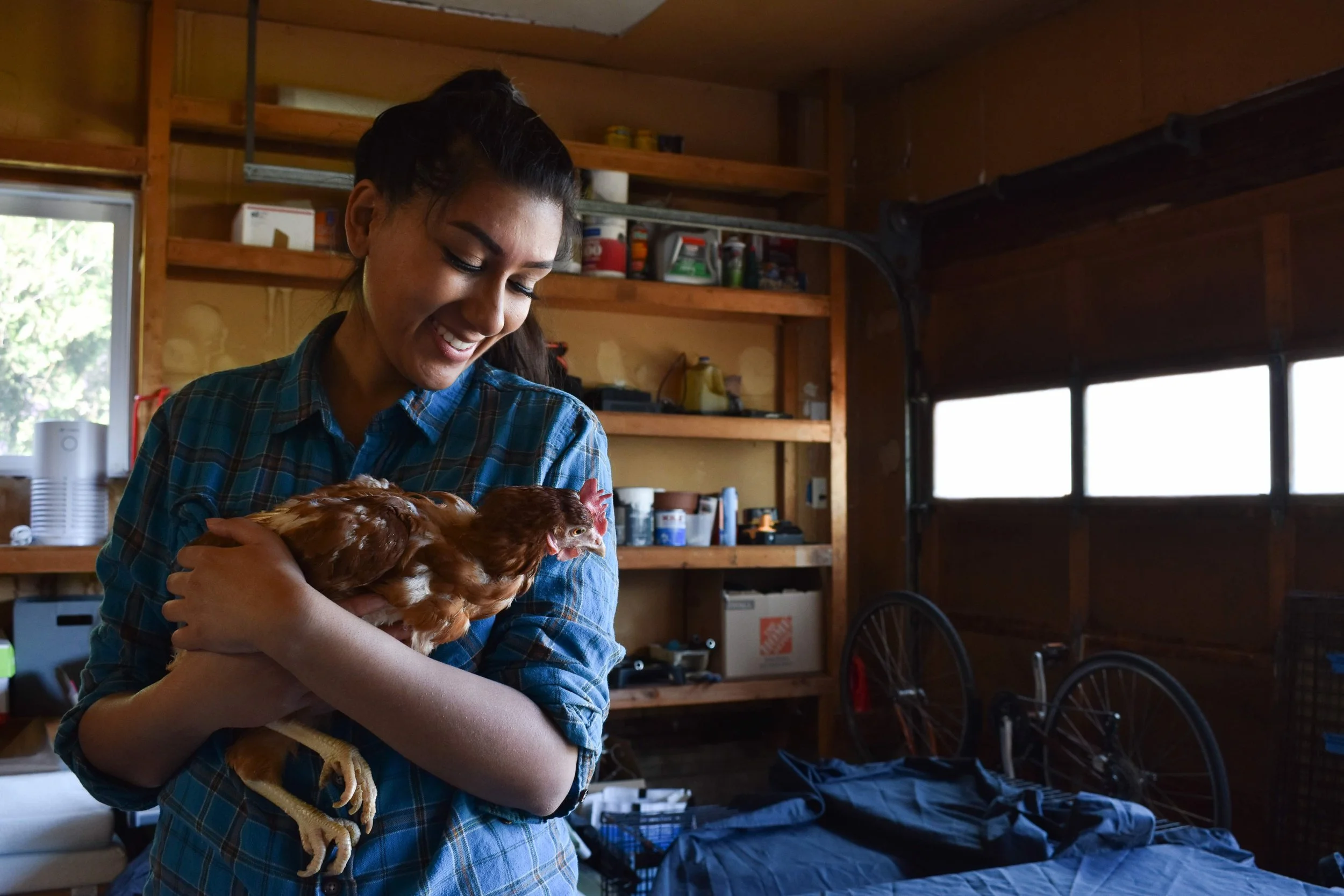We Animals: Diana Hulet
Hold On. Image: Diana Hulet
Amongst those speaking for animals, documentary photographers play invaluable roles: putting themselves in the places where animals arguably suffer the most, in order to record all-too-often hidden truths and reveal them to the world. Without these extraordinary activists, far fewer would know about the travesties routinely meted out to animals, both wild and farmed, or witness the individuals trapped within systems.
One of the leading agencies in this field is We Animals, founded by Jo-Anne McArthur. In 2022, We Animals published Hidden: Animals in the Anthropocene. “The photojournalists featured in HIDDEN have entered some of the darkest, most unsettling places in the world,” wrote actor and advocate Joaquin Phoenix in its foreword. “The images they have captured are a searing reminder of our unpardonable behavior towards animals and will serve as beacons of change for years to come.”
In this series, The Empathy Project celebrates the work of We Animals by asking some of its photographers to talk about their favourite images. In this article, Colorado-based yoga teacher, writer, animal photojournalist, and naturalist Diana Hulet describes Hold On, an image that has continued to resonate for her.
For the full story on the Aurora Hen Rescue, visit Sanctuary Doc, telling visual stories of compassion for animals amidst our world’s biggest challenges, here
Tanvi Varma and I did not know each other well prior to the Aurora hen rescue.
On the first day of what would become a two-week span of catching scared hens from an egg-laying operation, Tanvi came over to my garage, which was our staging area, to see the hens. She was one of the first activists who had made contact with the farm once our community caught wind that they were closing and selling off the birds or sending them to slaughter.
Early that morning, I had received a text from Tanvi saying that she wouldn’t be able to join us at our 7:00 a.m. meeting point. A historic lodge had caught fire the night before, and as a journalist for a local news station, she was covering that story. But she was still a significant part of the hens’ story and their rescue. She had been slated to be our main negotiator at the farm that morning, but I stepped in and negotiated in her place. By early afternoon, about fifty hens were being seen by vet techs, and would later head to sanctuaries and activists’ homes for quarantine.
As soon as Tanvi finished her shift at the station, she came right over. She talked to the hens and held this one in her arms, her heart full, knowing she had played an important part in the larger picture of their liberation. Even though she hadn’t been there physically that morning, she was woven into the story from the beginning. Liberation doesn’t happen because of just one person; it happens because many of us are holding different pieces of the work at the same time.
This image represents one moment in a series of moments that led to over 430 hens being saved from slaughter, many of them now living in sanctuaries across the Pacific Northwest.
Who you do not see in this image are the mother–daughter vet tech team administering meds and triaging the most critically injured or ill birds, activist Amber Canavan creating a makeshift desk on my washing machine and building the spreadsheet of transport volunteers and sanctuaries willing to step in, activists stepping outside to the backyard for a few breaths to pause and debrief, and the conversations already emerging about when we could return to save more.
Who is in the frame is Tanvi and the hen, and the kind of moment that all animal rights activists know deeply: the hands-on experience of feeling and holding a warm body who is now safe. A being who will live the rest of their days free from harm. Seen for who they are.
This is what we live for. This is who we fight for.
Hold On.
Because love is a verb.
Aurora, Oregon – April 2024
